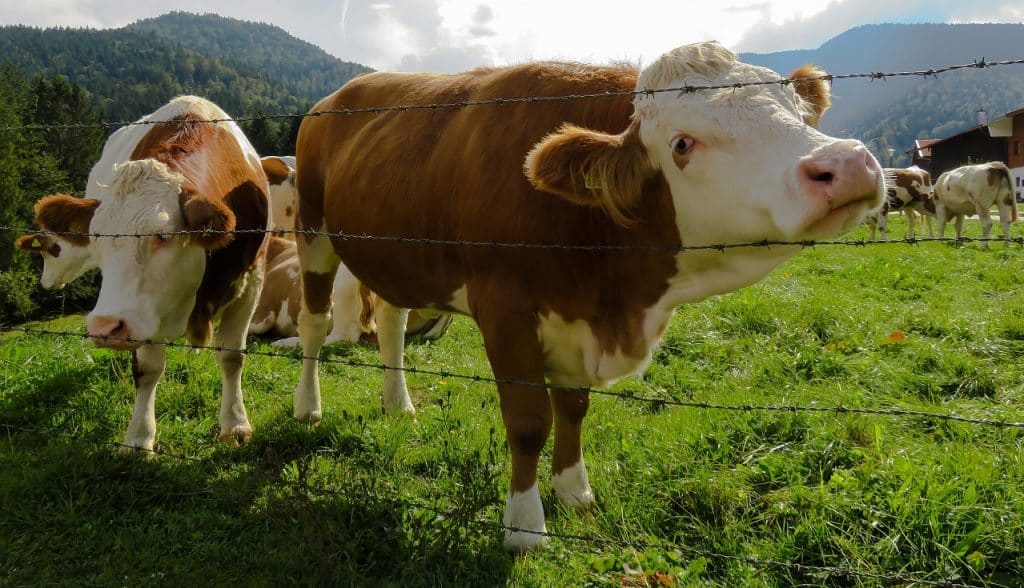Recent incidents involving cattle have underlined the potential dangers they pose to walkers, and the Health and Safety Executive (HSE) has issued a reminder on staying safe near cattle.
The HSE, however, is stressing that serious incidents involving cattle and walkers are rare, while reminding both farmers and walkers to do all they can to keep everyone safe.
Farmers have a legal responsibility to manage their herds to reduce risk to people using footpaths and other rights of way.
The HSE regularly investigates incidents involving cattle and the public. A proportion of these incidents involve serious injury and sometimes death. Incidents often involve cows with calves or bulls, and the person injured often has a dog.
The HSE’s published statistics show that in the five years leading up to March of this year, nine members of the public died after being attacked or trampled by cattle.
Public safety near cattle
Members of the public can find out about steps they can take to safely enjoy the countryside and respect farming activities by following HM Government advice in The Countryside Code.
The advice includes:
- Give livestock plenty of space. Their behaviour can be unpredictable, especially when they are with their young.
- Keep your dog under effective control to make sure it stays away from livestock. It is good practice wherever you are to keep your dog on a lead around livestock.
- Let your dog off the lead if you feel threatened by livestock. Releasing your dog will make it easier for you both to reach safety.
While many thousands of people enjoy the countryside and use the extensive network of footpaths, bridleways, and public access land every day, activities such as walking through or near cattle can be hazardous.
“All large animals can be a risk to people. Even a gentle knock from a cow can result in people being crushed or falling. All cattle should be treated with respect.
“Farmers should carefully consider the animals put into fields with footpaths, for example cows and calves are best kept in alternative fields. Even docile cattle, when under stress, perhaps because of the weather, illness, unusual disturbance, or when maternal or other instincts are aroused, can become aggressive.
“Follow farming industry and HSE guidance to reduce the risk from animals and help people to enjoy your land and pass through smoothly.”
HSE inspector Wayne Owen

Cattle safety advice for farmers and landowners
The HSE has published guidance to promote safety and the Cattle and public access in England and Wales: Advice for farmers, landowners and other livestock keepers (AIS 17EW) is available for free download. A risk assessment can help you identify the hazards and put controls in place to protect yourself, farm staff and the public. You should record the significant findings of your risk assessment and review these regularly and when there are changes.
The NFU has also published guidance to help farmers stay safe around cattle which is available on its website.
Key considerations for farmers and landowners include:
- No dairy bulls should be kept in fields with a public right of way (PROW) at any time.
- Where possible avoid putting cattle, especially cows with calves, in fields with PROW.
- Where there is a need to keep cattle with calves or a bull in a field with PROW do all that you can to keep animals and people separated. Consider the use of fencing (permanent or temporary e.g. electric fencing). This is particularly important at busy times or where PROW are heavily used.
- Assess the temperament of any cattle before putting them into a field with PROW.
- If cattle, especially cows with calves, do need to be put into fields with PROW, keep this period to a minimum.
- Position feed and water troughs away from the PROW and away from PROW entrances and exists to the field.
- Put in place a system to monitor any cattle in fields with PROW at least on a daily basis. It may be worth recording this.
- Consider culling any animal that shows signs of aggression.
- Any animal that has shown any sign of aggression must not be kept in a field with PROW.
- Clearly sign post all PROW across the farm. Display signage at all entrances to the field stating what is in the field (cows with calves / bulls).
If you require advice and support for your farm, please contact one of the Ashbrooke Team.
